Broccoli
Broccoli (Brassica oleracea var. italica) is a nutrient-rich cruciferous vegetable packed with fibre, vitamins, minerals, and antioxidants. It is particularly high in sulforaphane, a powerful bioactive compound that helps activate brown fat, which plays a key role in burning calories and reducing excess white fat. This metabolic boost makes broccoli a functional food that supports weight management and overall health.Additionally, sulforaphane has anti-inflammatory and detoxifying properties, further enhancing its role in promoting well-being.
Read More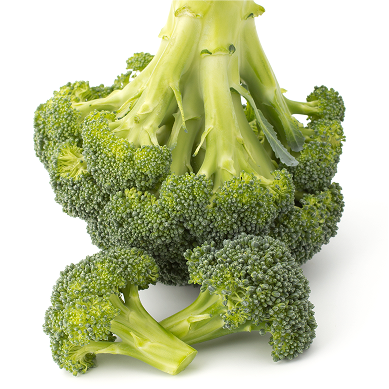
Recommended intake
- General health – 1/2 to 1 cup per day of cooked cruciferous vegetables.
Tips
- Choose organic options to reduce pesticide exposure.
- Look for fresh, firm vegetables with no yellowing or wilting leaves.
- To increase the sulforaphane content even further, add a pinch of mustard seeds while cooking. Mustard seeds contain the enzyme myrosinase, which enhances sulforaphane production, making broccoli even more beneficial.
Avoid
- Excessive intake – High in fibre, so too much can cause bloating or digestive discomfort.
- Overcooking – Overcooking can reduce the nutrient content, so try steaming or lightly cooking.
Benefits
- High in fibre, promoting digestion and regularity.
- Rich in antioxidants (like sulforaphane), supporting cellular health and detoxification.
- Packed with vitamins C, K, and folate, which support immunity and bone health.
Cucumbers
Cucumbers (Cucumis sativus) are a refreshing, low-calorie vegetable that provides plenty of nutrients with a mild flavour and high water ontent. They are an excellent source of vitamins K and C, as well as a good source of potassium, magnesium, and antioxidants. Cucumbers help to hydrate the body, support skin health, and promote overall well-being. What makes cucumbers a functional food is their unique compound cucurbitacin.
Read More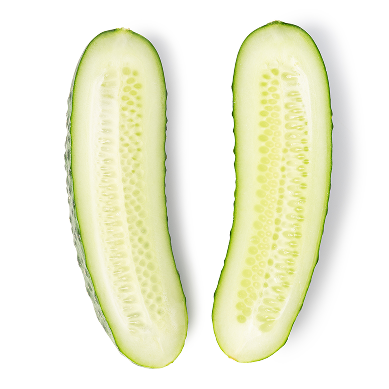
Incorporating cucumbers into your meals is quick and easy. Enjoy them raw in salads, sliced for snacks, or blended into refreshing smoothies. They also make a great addition to chilled soups or as a garnish for various dishes.
Recommended intake
- General health – 1/2 to 1 cup of cucumber slices per day.
Tips
- Choose organic cucumbers to minimise pesticide exposure.
- Look for cucumbers that are firm, dark green, and have smooth skin.
- For extra flavour, try adding fresh herbs like mint or dill to cucumber dishes.
- Pair cucumbers with healthy fats, such as olive oil or avocado, to boost the absorption of fat-soluble nutrients.
Avoid
- Excessive intake – Too much cucumber may cause digestive discomfort due to its high water and fibre content.
- Over-peeling – The skin contains many nutrients, so try to consume cucumbers unpeeled to retain their full health benefits.
Benefits
- High in water content, supporting hydration and skin health.
- Rich in vitamins K and C, promoting bone health and immune function.
- Contains cucurbitacins, which have anti-inflammatory, anti-cancer, and metabolic benefits.
- Supports digestion with its fibre and water content.
Red, Green, and Yellow Pepper
Red, green, and yellow peppers (Capsicum annuum) are nutrient-dense functional foods, known for their vibrant colours, crisp texture, and impressive health benefits. These vegetables are rich in essential vitamins, minerals, and antioxidants, making them a valuable addition to a well-balanced diet.The functional benefits of peppers lie in their high vitamin C content, which supports immune function, skin health, and collagen production.
Read More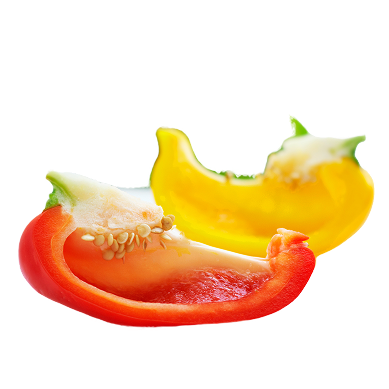
Red peppers, in particular, contain the highest levels of vitamin C and beta-carotene, which promote eye health and reduce oxidative stress. Green peppers, which are harvested earlier, have a slightly bitter taste and are rich in chlorophyll and fibre, aiding digestion and detoxification. Yellow peppers offer a milder sweetness and provide an excellent source of lutein and zeaxanthin, important for vision and cognitive function.
In addition to vitamins C and A, peppers contain potassium, which helps regulate blood pressure, and a variety of antioxidants that combat inflammation. Their naturally low-calorie, high-fibre profile makes them ideal for weight management and overall metabolic health.
Incorporating peppers into your diet is easy and delicious. Enjoy them raw in salads, sliced as a crunchy snack, or cooked in stir-fries, soups, and roasted dishes. Their natural sweetness enhances a variety of meals, and they can also be blended into sauces or dips for an added nutrient boost.
Recommended Intake
- ½ to 1 cup of chopped peppers per day (approximately 75-150g), depending on individual dietary needs.
Tips
- Choose firm, brightly coloured peppers for optimal freshness and nutritional value.
- Store in the refrigerator to maintain crispness and longevity.
- Roast or grill for a deeper, smoky flavour.
- Add to salads, wraps, and omelettes for a nutrient-dense boost.
- Pair with healthy fats like olive oil or avocado to enhance the absorption of fat-soluble vitamins.
Avoid
- Overcooking – Excessive heat can degrade vitamin C and other antioxidants.
- Storing cut peppers uncovered – Keep them in an airtight container to retain freshness.
- Consuming if sensitive to nightshades – Peppers belong to the nightshade family and may not be suitable for everyone.
Benefits
- Exceptionally high in vitamin C, supporting immune function and skin health.
- Rich in antioxidants like beta-carotene, lutein, and zeaxanthin, promoting eye health.
- Contains potassium, helping to regulate blood pressure and cardiovascular function.
- Provides dietary fibre, supporting digestive health and gut function.
- Low in calories and high in water content, making them ideal for weight management.
- Naturally anti-inflammatory, helping to combat oxidative stress and support overall wellness.
Red, White, and Green (spring) Onion
Red, white, and green onions (Allium cepa and Allium fistulosum) are powerful functional foods, valued for their distinct flavours, crisp textures, and impressive health benefits. These versatile vegetables are rich in essential vitamins, minerals, and antioxidants, making them a valuable addition to a nutrient-dense diet. The functional benefits of onions lie in their high content of sulfur compounds, particularly allicin, which supports cardiovascular health, reduces inflammation, and has antimicrobial properties.
Read More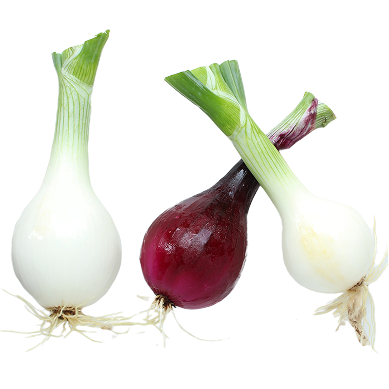
Red onions contain anthocyanins, potent antioxidants that help combat oxidative stress and support heart health. White onions have a milder flavour and are rich in quercetin, which has anti-inflammatory and immune-boosting properties. Green onions (spring onions) are an excellent source of vitamin K, which supports bone health and proper blood clotting, as well as vitamin C for immune function and skin health.
In addition to their antioxidant and anti-inflammatory benefits, onions are naturally prebiotic, promoting gut health by supporting beneficial gut bacteria. Their sulphur compounds also play a role in detoxification and overall metabolic function.
Incorporating onions into your diet is easy and flavourful. Use red onions raw in salads, salsas, or as a garnish, while white onions are ideal for sautéing, roasting, or adding to soups and stews. Green onions can be finely chopped and sprinkled over dishes for a fresh, mild onion flavour.
Recommended Intake
- ½ to 1 small onion per day (approximately 50-100g), depending on individual dietary needs.
Tips
- Choose firm, unblemished onions for optimal freshness and nutritional value.
- Store red and white onions in a cool, dry place, and refrigerate green onions to maintain freshness.
- Soak sliced onions in cold water for a milder flavour if eating raw.
- Use both the white and green parts of spring onions to maximise nutrition.
- Pair with healthy fats like olive oil to enhance the absorption of fat-soluble compounds.
Avoid
- Overcooking – Excessive heat can reduce the beneficial sulphur compounds.
- Storing cut onions uncovered – Keep them in an airtight container to retain freshness and prevent odour transfer.
- Consuming in excess if sensitive – Some people may experience digestive discomfort from onions due to their fermentable carbohydrates (FODMAPs).
Benefits
- Rich in sulphur compounds like allicin, supporting heart health and immune function.
- High in antioxidants, including anthocyanins in red onions and quercetin in white onions, reducing inflammation.
- Contains prebiotics that promote gut health and support digestion.
- Green onions provide vitamin K, which is essential for bone health and blood clotting.
- Naturally antimicrobial and anti-inflammatory, aiding in detoxification and overall wellness.
- Supports metabolic function and helps regulate blood sugar levels.
Tomatoes
The tomato (Solanum lycopersicum) is a widely loved fruit that is not only packed with essential vitamins and minerals but also offers functional food benefits that promote fat loss, brain health, and overall well-being. One key compound found in tomatoes is lycopene, a powerful antioxidant that has been studied for its ability to support fat reduction. In a study conducted in Portugal, just one ripe tomato consumed an hour before lunch for a month resulted in a decrease in visceral fat in young women with normal body types.
Read More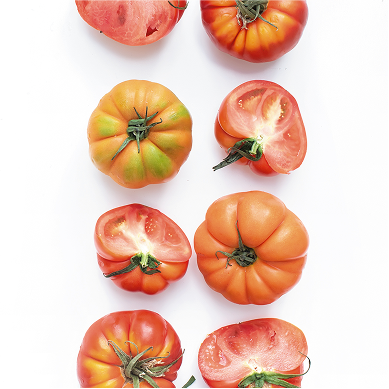
This simple habit can potentially help with fat loss and improve body composition.
Beyond fat loss, tomatoes are rich in polyphenols, which have antioxidant properties that help protect DNA from damage caused by environmental stress, toxins, and even emotional stress. This antioxidant protection is crucial for overall health and helps counteract the damage done by oxidative stress, ensuring that the body functions at its best.
Tomato juice is another excellent way to incorporate the benefits of tomatoes. It contains bioactive compounds like lycopene and other carotenoids, which are not only beneficial for your skin and fat reduction but also help stimulate your body’s stem cells. These stem cells travel through the body, including the brain, aiding in repair and regeneration. By incorporating tomatoes into your diet, you support the body’s natural healing processes, improving your overall health and vitality from the inside out.Recommended intake
- General health – 1/2 to 1 cup per day of fresh tomatoes.
Tips
- Choose firm, ripe tomatoes with vibrant colour.
- Opt for organic varieties to avoid pesticide exposure.
Avoid
- Overcooking – Overcooking tomatoes can reduce their lycopene content.
- Canned varieties – Choose fresh tomatoes or BPA-free canned tomatoes if necessary.
Benefits
- High in antioxidants, particularly lycopene, which supports heart health.
- Rich in vitamin C, supporting immunity and skin health.
- Contains potassium, which supports heart function and hydration.
Recipe Hack: Recipe Hack for Homemade Passata Instead of using store-bought tinned or jarred passata, try making your own fresh and flavourful tomato base at home. In a pressure cooker, add one bag of fresh, organic tomatoes (washed to remove pesticides), along with red onion, coriander microgreens, garlic, ginger, and turmeric. Pour in some homemade or non-GMO vegetable stock, then cook under pressure for 30 minutes. Once done, blend everything together until smooth. This homemade passata is perfect for adding a nutritious and vibrant tomato base to any meal, from soups and stews to pasta sauces or curries!
Shiitake Mushrooms
Shiitake mushrooms are a nutrient-dense functional food valued for their rich umami flavour and potent health benefits. They are an excellent source of bioactive compounds, fibre, and essential vitamins and minerals. Compared to common mushrooms, shiitakes provide unique phytonutrients that support overall well-being.The functional benefits of shiitake mushrooms lie in their high content of polysaccharides, particularly lentinan, which supports immune function and exhibits anti-inflammatory properties.
Read More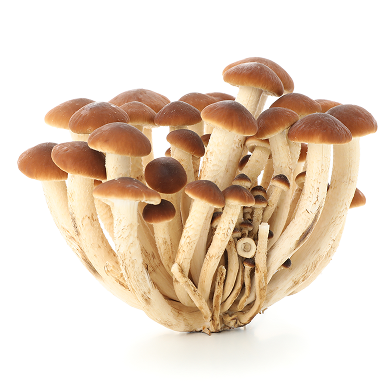
Recommended Intake
- 3 to 4 servings per week to maximise immune and metabolic benefits.
Tips
- Choose fresh or dried shiitake mushrooms for optimal flavour and nutritional value.
- Lightly cook shiitakes to enhance nutrient absorption and bioavailability.
- Pair with garlic, ginger, or miso to enhance their immune-supporting properties.
- Store fresh shiitakes in a paper bag in the fridge to maintain freshness.
Avoid
- Overcooking – Excessive heat can reduce the potency of bioactive compounds.
- Consuming raw shiitakes in large amounts – This may cause skin irritation in some individuals.
Benefits
- Supports immune function through polysaccharides like lentinan.
- Rich in B vitamins, aiding energy production and nervous system health.
- Provides ergosterol, a precursor to vitamin D, supporting bone strength.
- Contains antioxidants like selenium and copper, protecting cells from oxidative stress.
- Contributes to heart health by promoting healthy cholesterol levels.









